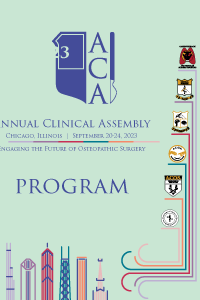- SL
Samuel B. Lassiter
Lake Erie College of Osteopathic Medicine
New York City, New York, United States
Primary Presenter(s)
Penile fractures are rare traumatic injuries that involve the rupture or tear of the tunica albuginea. These fractures typically occur when there is a sudden bending or twisting force applied to an erect penis, often occurring due to vigorous sexual activity. Penile fractures are graded on a scale from 0 to IV. Grade 0 fractures display no tear in the tunica albuginea with a hematoma superficial or deep to Buck’s Fascia. Grade I fractures involve a tear or defect in the tunica albuginea and grade II fractures have the added defect of peri-albugineal and cavernosal hematomas. Grade III fractures are characterized by a tear or rupture of the tunica albuginea along with Buck’s fascia. Grade IV penile fractures involve a through and through tear of the of the albuginea, corpus spongiosum and urethra including any vascular malformations. Grade IV fractures carry a higher risk of complications and require urgent urological treatment to repair the damaged structures and prevent long-term complication including erectile dysfunction(ED), Peyronie’s disease(PD) and Urethral strictures.
Methods or Case Description:
We present the case of a 52 year-old male who was found to have a grade IV penile fracture that occurred immediately preceding a sexual encounter. The fracture was confirmed via MRI which revealed a 10 mm tear in the ventral right tunica albuginea. The need for emergent primary surgical repair was discussed with the patient who agreed. A retrograde urethrogram was completed to assess for urethral injury which displayed extravasation of contrast and a Foley catheter was placed to help guide repair. A suprapubic catheter was also placed. Surgical exploration via a degloving incision did reveal a through and through fracture of the tunica albuginea, corpora cavernosa, urethra and corpora spongiosa. The urethral injury was repaired utilizing simple interrupted sutures with 5-0 Monocryl utilizing the Foley catheter to guide repair. The corpora tear was also repaired with simple interrupted sutures but with 3-0 Monocryl. The immediate post-operative course was uncomplicated and the patient was discharged home with the foley catheter and suprapubic tube(SPT) in place. The foley catheter was capped and the SPT managed with gravity drainage. Patient was instructed to follow up in one week.
Outcomes:
At 1-week postoperatively, the patient reported no complaints and both the SPT and foley catheter were left in place. At 2-weeks postoperatively, the patient reported spontaneous erections. He was seen again at 3 and 4-weeks post-operatively. At 4-weeks post-op, a successful void trial was completed and the foley and SPT were removed. The patient was followed regularly and at 6-months post-operatively reported spontaneous erections without the development of Peyronie’s disease and denied any urinary complaints.
Conclusion:
Type IV penile fractures, characterized by complete rupture of the tunica albuginea with involvement of the urethra, are severe injuries that necessitate prompt surgical intervention for optimal outcomes. These fractures carry the risk of significant complications including Peyronie's disease, erectile dysfunction and urethral strictures. Primary repair is the recommended approach for penile fractures, however there is limited data on post-operative complications specific to grade IV fractures. For all grades of penile fractures treated with primary surgical repair, 17% of patients experience ED, 13.5% of patients develop PD and 9% of patients develop urethral strictures. Further research is needed to specifically examine grade IV penile fractures focusing on the ideal surgical approach and associated complication rates to help guide physicians and accurately stratify the risk of post-operative complications.

